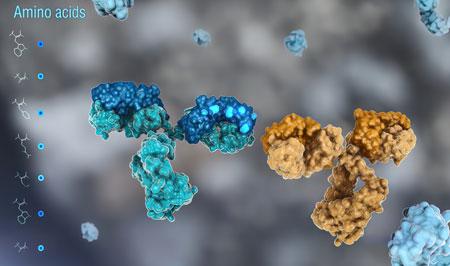PEG Hydrogels: Uses, Advantages, and Developments

Polyethylene glycol (PEG) hydrogels have emerged as a game-changer in various scientific and technological fields due to their unique properties. These hydrogels are formed by the cross-linking of PEG, a biocompatible polymer known for its flexibility, hydrophilicity, and adjustable physical properties. This article delves into the significance, applications, benefits, and innovations surrounding PEG hydrogels.
What Are PEG Hydrogels?
PEG hydrogels are three-dimensional polymer networks that can retain large amounts of water while maintaining their structural integrity. They are synthesized by cross-linking PEG molecules, either through chemical reactions or physical associations. The result is a hydrogel with tunable mechanical and chemical properties, which can be tailored to specific requirements by adjusting the molecular weight and cross-linking density of the PEG.
Applications of PEG Hydrogels
Biomedical Applications
Drug Delivery Systems: PEG hydrogels can encapsulate drugs and release them in a controlled manner. Their porous structure allows for the gradual diffusion of therapeutic agents, making them ideal for sustained and localized drug delivery.
Tissue Engineering: These hydrogels serve as scaffolds for cell growth and tissue regeneration. Their biocompatibility ensures that they do not elicit adverse immune reactions, making them suitable for regenerating tissues such as cartilage, bone, and skin.
Wound Healing: PEG hydrogels create a moist environment that promotes faster wound healing. They can be loaded with antibiotics or other therapeutic agents to enhance the healing process.
Biotechnology and Molecular Biology
Cell Encapsulation: PEG hydrogels can encapsulate cells for various biotechnological applications, including the creation of artificial organs and the study of cell behavior in a three-dimensional environment.
Biosensors: These hydrogels can be used to create biosensors for detecting biological molecules. Their ability to swell and shrink in response to environmental changes makes them useful for sensing applications.
Environmental Science
Water Purification: PEG hydrogels can be functionalized with specific groups to absorb heavy metals and other contaminants from water, providing a sustainable solution for water purification.
Agriculture: They can be used to deliver nutrients and water to plants in a controlled fashion, improving crop yields in arid regions.
Benefits of PEG Hydrogels
Biocompatibility: PEG is inherently non-toxic and non-immunogenic, making its hydrogels suitable for biological applications without adverse effects.
Tunability: The physical and chemical properties of PEG hydrogels can be easily modified by altering the PEG chain length and cross-linking density, allowing for customization according to specific needs.
High Water Content: These hydrogels can retain large amounts of water, which is beneficial for applications that require a hydrated environment.
Ease of Functionalization: PEG hydrogels can be easily modified with functional groups to interact with various biological molecules, enhancing their utility in different applications.
Innovations in PEG Hydrogel Research
Recent advancements in PEG hydrogel research have focused on enhancing their functionality and expanding their applications. Some notable innovations include:
Smart Hydrogels: Researchers are developing smart PEG hydrogels that can respond to specific stimuli such as pH, temperature, and light. These hydrogels have potential applications in targeted drug delivery and responsive biosensors.
Hybrid Hydrogels: Combining PEG with other polymers or nanoparticles has led to the creation of hybrid hydrogels with improved mechanical strength, conductivity, and bioactivity. These hybrid hydrogels are being explored for advanced tissue engineering and regenerative medicine applications.
3D Printing: The integration of PEG hydrogels with 3D printing technology has opened new avenues for creating complex structures for tissue engineering and other biomedical applications. This approach allows for precise control over the geometry and composition of the hydrogels.
Injectable Hydrogels: Injectable PEG hydrogels are being developed for minimally invasive medical treatments. These hydrogels can be delivered into the body as a liquid and then solidify in situ, providing a flexible and less invasive alternative to traditional implants.
Conclusion
PEG hydrogels represent a versatile and dynamic class of materials with broad applications across multiple fields, particularly in biomedicine, biotechnology, and environmental science. Their biocompatibility, tunable properties, and ease of functionalization make them highly valuable for various scientific and industrial applications. As research progresses, the development of smart, hybrid, and 3D-printed PEG hydrogels promises to unlock new possibilities, driving innovations and improving outcomes in healthcare, environmental sustainability, and beyond.
- Questions and Answers
- Opinion
- Story/Motivational/Inspiring
- Technology
- Art
- Causes
- Crafts
- Dance
- Drinks
- Film/Movie
- Fitness
- Food
- Juegos
- Gardening
- Health
- Home
- Literature
- Music
- Networking
- Other
- Party
- Religion
- Shopping
- Sports
- Theater
- Wellness
- News
- Culture
- War machines and policy

